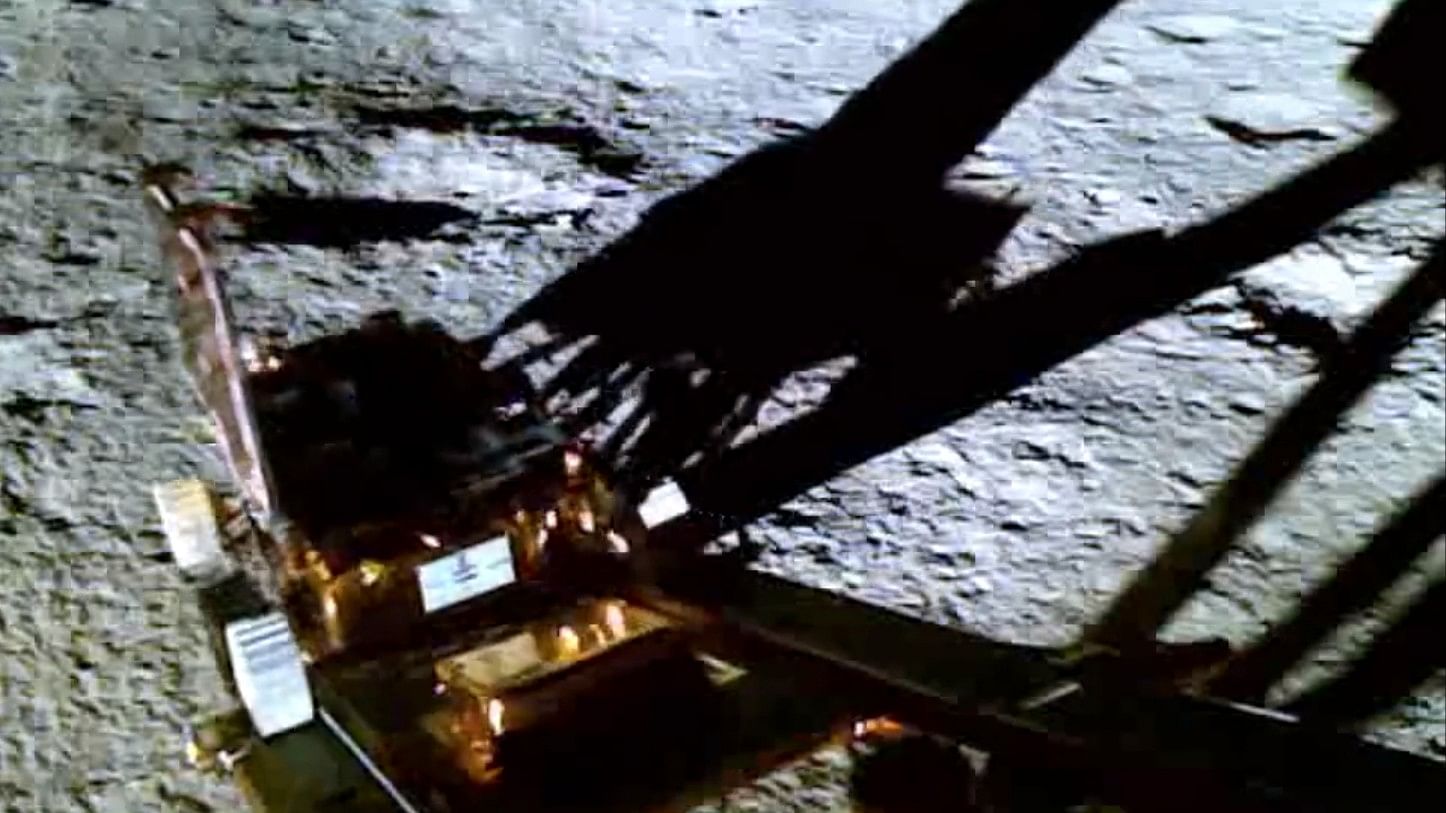
Screengrab from video showing a view of the Pragyan rover descending to the lunar surface from the Vikram lander.
Credit: X/@isro
The Indian Space Research Organisation (ISRO) on Friday said all payloads on the Chandrayaan-3 lander, rover, and propulsion module are performing nominally.
The rover, Pragyan, has traversed a distance of eight metres on the lunar surface and the two rover payloads have been activated. ISRO turned on the three payloads on the lander and one payload on the propulsion module, on Thursday and Sunday, respectively. All planned movements of the rover have been verified.
Powered by a solar panel, the six-wheeled, 26-kg rover will move about on the lunar surface to conduct scientific experiments with its two payloads. The rover has two instruments – the Laser Induced Breakdown Spectroscope (LIBS) and Alpha Particle X-Ray Spectrometer (APXS) – that will determine the elemental and chemical composition of the lunar surface.
RAMBHA, ChaSTE and ILSA are the three lander payloads that will measure surface plasma density, thermal properties, and seismic activity around the landing site, respectively.
Spectropolarimetry of HAbitable Planet Earth (SHAPE), the payload on the propulsion module, is aimed at probing exoplanets for habitability.
The lander module of Chandrayaan-3, India’s third lunar exploration mission, achieved a soft-landing on the lunar surface on Wednesday, making India the first country to reach the moon’s unexplored south polar region.
First visuals of Pragyan
Earlier in the day, the space agency released the first visuals of Pragyan ramping down on to the moon. The 30-second video showed the rover rolling out of the lander, Vikram, on the day of the touchdown. The rollout was facilitated by a two-segment ramp and was captured by the lander imager camera.
ISRO also released a video that showed the deployment of the ramp and the solar panel. The 26 deployment mechanisms in Chandrayaan-3 were developed at the U R Rao Satellite Centre, Bengaluru.
The lander and the rover have a mission life of one lunar day (14 earth days). While the rover communicates with the lander, the lander communicates with the Indian Deep Space Network, the Chandrayaan-2 orbiter, and the rover.